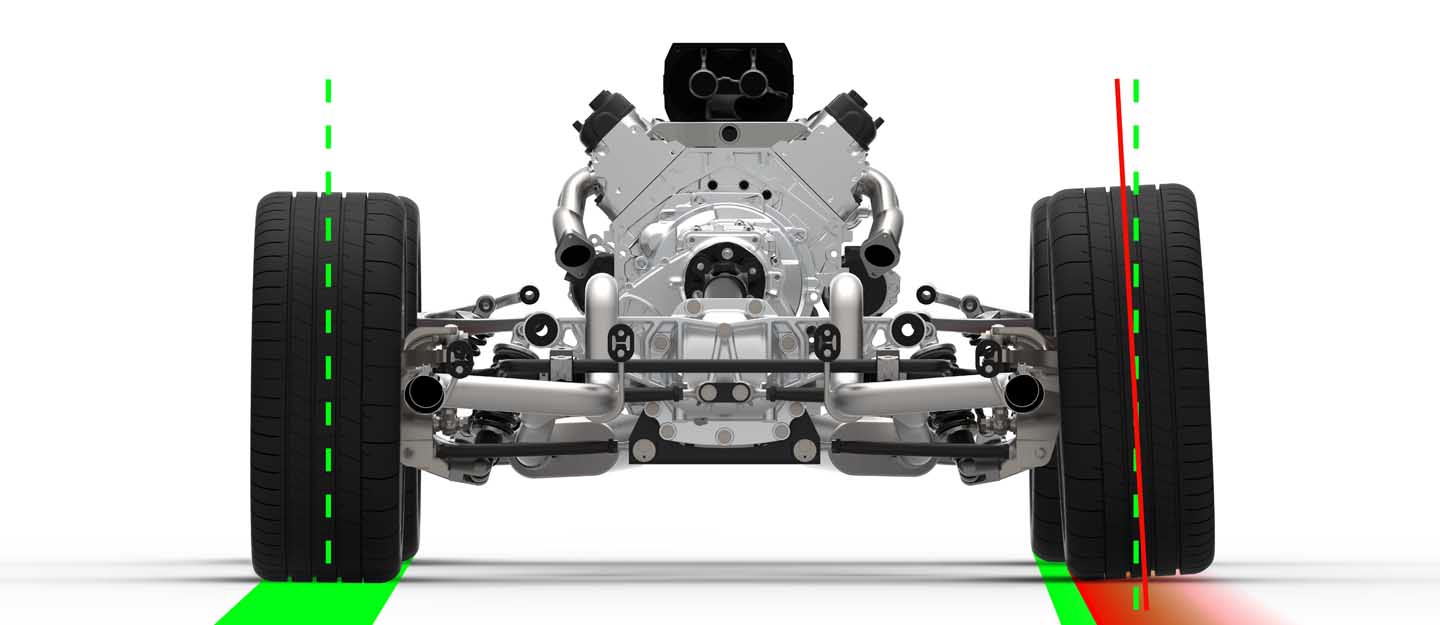Understanding the Key Components of a Vehicle Drivetrain

The movement of a vehicle relies on various complex mechanisms, among which a drivetrain plays a crucial role. It comprises various mechanical components that work in synchronisation to ensure smooth operations. Understanding the basics of a vehicle’s drivetrain can explain the mechanics under the hood. Let’s explore more the fundamental components of a vehicle drivetrain, exploring their functions and how they work together to propel a car.
The drivetrain is the backbone of any vehicle, responsible for transmitting power from the engine to the wheels and enabling motion. By understanding the key components of a drivetrain, drivers can also gain insights into how their vehicles operate and make informed decisions regarding maintenance, upgrades and driving techniques.
A vehicle drivetrain is based on several key components. Let’s detail them and explore their intricate functionalities.
A car’s transmission is a crucial part of a vehicle’s drivetrain and responsible for transferring power from the engine to the wheels. There are several car transmission types, including manual, automatic and continuously variable transmissions (CVT), each with its own set of mechanisms for changing gears.
In manual transmissions, the driver manually selects gears using a gear shifter, while automatic transmissions use a hydraulic system to shift gears automatically based on driving conditions. CVTs, on the other hand, offer a seamless transition between gear ratios, providing optimal fuel efficiency and performance.
The car differential system is another essential component of the drivetrain, located between the axles of the vehicle. Its primary function is to distribute power from the transmission to the wheels while allowing them to rotate at different speeds, particularly when turning corners. Moreover, this differential action ensures smooth and stable handling, preventing wheel slippage and maximising traction on different road surfaces.
Connecting the transmission to the differential is the driveshaft, a rotating shaft that transmits torque from the engine to the wheels. A driveshaft is commonly found in rear-wheel-drive and four-wheel drive cars, delivering power to the rear or all four wheels, respectively. Also, in front-wheel-drive vehicles, the driveshaft is replaced by a transaxle, combining the functions of the transmission and differential into a single unit.
Axles serve as the final link in the drivetrain, transferring power from the differential to the wheels. Depending on the vehicle’s configuration, there may be one or multiple axles, with each axle supporting one or more wheels. Axles come in various designs, including solid axles and independent suspension systems, each offering different levels of durability, performance and comfort.
In four-wheel-drive vehicles, an additional component called the transfer case is employed to distribute power between the front and rear axles. The transfer case allows drivers to select between two-wheel drive and four-wheel drive modes. It also provides enhanced traction and stability in off-road or adverse driving conditions.
CV joints are mechanical components in the drivetrain. The joints connect the axle shaft to the wheels, allowing for the transmission of power at various angles without causing vibrations or loss of efficiency. They are specifically designed to accommodate the movement of the suspension and steering systems while maintaining constant velocity.
In front-wheel-drive vehicles, CV joints are commonly found at both ends of the drive axle. They connect the transmission to the wheels. These joints allow the wheels to pivot during steering manoeuvres while ensuring a consistent transfer of power. They also help in enhancing traction and stability.
Similarly, in all-wheel-drive vehicles, CV joints are essential components of the drivetrain. They enable power transmission to all four wheels while accommodating the varying speeds and angles associated with each wheel’s movement. This ensures optimal performance and control, especially in challenging driving conditions such as off-road terrain or slippery surfaces.
Within the differential lies another crucial element known as the final drive or differential ratio. This ratio determines the number of times the engine’s rotational speed is translated into the rotational speed of the wheels. A higher final drive ratio results in quicker acceleration but lower top speed, while a lower ratio yields higher top speed but slower acceleration. Automakers carefully select final drive ratios to achieve a balance between performance, fuel efficiency and driving dynamics.
In manual transmissions, the clutch plays a pivotal role in engaging and disengaging the transmission from the engine. It consists of a friction plate and a pressure plate that are pressed together to transmit power when engaged and separated. Proper clutch operation requires precise coordination between the driver’s foot and the gearbox, allowing for smooth gear changes. Here are some more details about the difference between dual-clutch auto vs torque converter vs CVT.
The drivetrain encompasses all the components involved in transferring power from the engine to the wheels, including the transmission, differential, driveshaft, axles and wheels. The torque converter transmits power from the engine to the transmission.
While the torque converter operates differently from other components in the drivetrain, its function remains integral to the overall propulsion of the vehicle. By utilising fluid coupling to transmit torque, the torque converter allows for smooth acceleration and idle operation. This results in seamless transitions between gears, all of which contribute to the vehicle’s performance and drivability.
The components of the drivetrain include the transmission, differential, driveshaft, axles and in some cases, CV joints or transfer cases for four-wheel-drive vehicles.
The different types of drivetrains are:
If you are interested, explore the difference between AWD vs 4WD cars.
These were some key details on the components of a vehicle drivetrain.
Whether you’re planning to buy used car for sale in the UAE or a new one, understanding a vehicle’s drivetrain can enhance both your driving experience and car maintenance.
Stay tuned to the dubizzle car blog to learn more about different car parts.